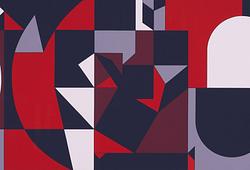Gudmar Olovson
Gudmar Olovson, sculpture. Signed. Numbered. Foundry mark. Bronze, height 61 cm, length 46 cm.
"Faune et nymphe" (Faun and nymph). Signed Gudmar. Numbered 3/8. Foundry mark FC (Fonderie Coubertin), 2011. Brown/red patina. Height 61 cm, length 46 cm, width 38 cm. The motif conceived 1971.
Insignificant surface dirt. Minor scattered scratchmarks, som white stains.
Muut tiedot
In Roman mythology, fauns are neither one thing nor the other, with the legs of a goat and the body of a man but with a goat’s ears and horns. Fauns in art symbolise peace and fertility. The female equivalents are nymphs, who often accompany other gods and goddesses and are the object of the male fauns’ desire.
Subjects featuring fauns and nymphs are common in classical as well as modern art history. In Gudmar Olovson’s version, the distinct influence of Auguste Rodin’s sculpture of the same name, Faune et Nymphe/Minotaure can be seen, where Rodin was clearly inspired by the mythological theme but mainly fascinated by the shapes and inherent power of the bodies.
In Olovson’s version of “Faun et Nymphe” we see an apparently violent act of love in which the bodies are both drawn to and away from each other. To the viewer, the sculpture is a frozen moment in an expressive movement of emotion and desire.



















































